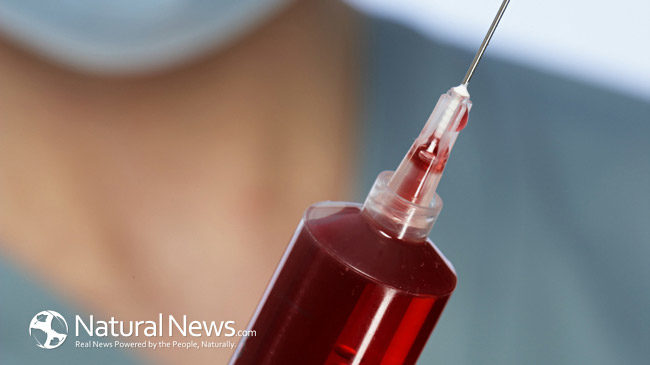I have to ask: If you need personal protective equipment to handle food…Can you assume it’s safe to eat? It’s safe to say avocados aren’t corrosive, you don’t necessarily need splash goggles to slice into a watermelon, or a dust respirator to throw some nutritional yeast on your popcorn. But again, the FDA seems to still recognize that Petroleum derivatives are safe as a food substance. Also, explain how countless laboratory studies clearly state an additive is toxic, not to ingest, handle with caution, consult experts before handling and the average consumer “trusts” our government to provide safe food.
Whatever the chemical may be, how is it that the toxicology studies almost always suggest it is poison and the FDA continues to insist it’s G.R.A.S.? I always stress, regardless the amounts in food or how low the toxicity may be, it’s still laced with synthetic, cancer producing, tumor growing chemicals substances.
General research:
Red #40
FD&C Red No. 40 may be safely used for coloring foods (including dietary supplements) Red dye contains Lead and Arsenic
Red 40 is the FDA-approved version of Allura Red, which was first produced by Allied Chemical Corp. It is approved for use in beverages, bakery goods, dessert powders, candies, cereals, foods, drugs, and cosmetics and, in terms of pounds consumed, is by far the most-used dye
Red 40, Yellow 5, and Yellow 6 contain Benzidene, a human and animal carcinogen permitted in low, presumably safe levels in dyes. The FDA does not test for bound Benzidine when it certifies the purity of dyes.
Red 40 proved positive as an allergen. Possible carcinogen contaminant include p-Cresidine. There is evidence, albeit controversial and inconclusive, that Red 40, the most widely used dye, accelerates the appearance of tumors of the reticuloendothelial system in mice. No tumors were found in the only good study (per the FDA)
Benzidine: http://jparks785.wix.com/your-daily-additives#!benzidine/cnfb
p-Cresidine: http://jparks785.wix.com/your-daily-additives#!p-cresidine/c9w4
Arsenic: http://jparks785.wix.com/your-daily-additives#!page3/cee5
Lake dyes may consist of: Alumina, blanc fixe, gloss white, clay, titanium dioxide, zinc oxide, talc, rosin, aluminum benzoate, calcium carbonate, or any combination of two or more of these, basic radical sodium, potassium, aluminum, barium, calcium, strontium, or zirconium
Red 40 also may accelerate the appearance of immune-system tumors in mice. The dye causes hypersensitivity (allergy-like) reactions in a small number of consumers and might trigger hyperactivity in children.
Red 40 was negative in the majority of genotoxicity assays performed, but positive in the in vivo comet assay in the glandular stomach, lungs, and colon of mice (Sasaki, Kawaguchi et al. 2002). That indicates that Red 40 can cause DNA damage in vivo
52 patients suffering from urticaria and angioedema for more than 4 weeks were placed on a 3-week elimination diet. Red 40 administered orally in doses of 1 or 10 mg induced a hypersensitivity reaction in 15% of the patients who were generally symptom-free at the time of provocation (Mikkelsen, Larson et al. 1978).
Dr. M. Adrian Gross, a senior FDA pathologist, concluded that there was clear evidence to support an acceleration effect of RE tumors because there was a decreased latency period without a corresponding increase in overall tumor incidence
“Considering the safety questions and its non-essentiality, Red 40 should be excluded from foods unless and until new tests clearly demonstrate its safety.”
Genotoxicity studies
- Comet Assay; DNA damage; 10 mg/kg in colon; 100 mg/kg in glandular stomach; 1,000 mg/kg in lungs Positive (Sasaki, Kawaguchi et al. 2002)
- Comet Assay; DNA damage; 2,000 mg/kg to pregnant mice; 10 mg/kg in male mice; Positive in colon (Sasaki, Kawaguchi et al. 2002)
Potential Health Effects:
- Eyes: May cause irritation.
- Skin: May cause irritation to skin.
- Ingestion: May cause gastrointestinal discomfort.
- Inhalation: May cause irritation to respiratory tract.
- Unusual Fire and Explosion Hazards: Avoid Dusting. May become explosive when dispersed in air.
- Precautions to Take in Handling or Storing: Do not ingest or take internally.
- Consult an expert on disposal of recovered material and ensure conformity to local, state, and federal disposal regulations
- These products are carbon oxides, nitrogen oxides, sulfur oxides
Do not ingest. Do not breathe dust. If ingested, seek medical advice immediately and show the container or the label.
Protective Gloves: Natural rubber, Neoprene, PVC or equivalent.
Eye Protection: Splash proof chemical safety goggles should be worn.
Other Protective Clothing or Equipment: Lab coat, apron, eye wash, safety shower.
Emergency Overview: CAUTION – Harmful by inhalation and if swallowed.
EINECS: This product is on the European Inventory of Existing Commercial Chemical Substances
- References:
- http://www.sciencelab.com/msds.php?msdsId=9924020
- https://www.spectrumchemical.com/MSDS/F3070.PDF
- http://www.carolina.com/pdf/msds/fdcred40.pdf
- http://cspinet.org/new/pdf/food-dyes-rainbow-of-risks.pdf
- http://www.law.cornell.edu/cfr/text/21/74.340#a_1
- http://www.law.cornell.edu/cfr/text/21/82.1051
Legal G.R.A.S
http://www.law.cornell.edu/cfr/text/21/184.1
G.R.A.S. List
http://www.accessdata.fda.gov/scripts/fcn/fcnNavigation.cfm?rpt=eafusListing
Some extra reading material
- http://gerson.org/gerpress/,
- http://www.tcolincampbell.org/,
- http://www.heartattackproof.com/,
- http://www.davidwolfe.com/,
- http://www.blaylockreport.com/,
- http://www.foodmatters.tv/,
- http://www.infowars.com/,
- http://www.prisonplanet.com/
- Your Daily Additives – MSG http://www.naturalnewsblogs.com/your-daily-additives-msg/
- Your Daily Additives – High Fructose Corn Syrup http://www.naturalnewsblogs.com/your-daily-additives
- Your Daily Additives – Aspartame http://www.naturalnewsblogs.com/your-daily-additives-2/
- Your Daily Additives – Sodium Nitrate http://www.naturalnewsblogs.com/your-daily-additive-sodium-nitrate/
- Your Daily Additives – Common Food Dyes http://www.naturalnewsblogs.com/your-daily-additives-dye-week-2/





